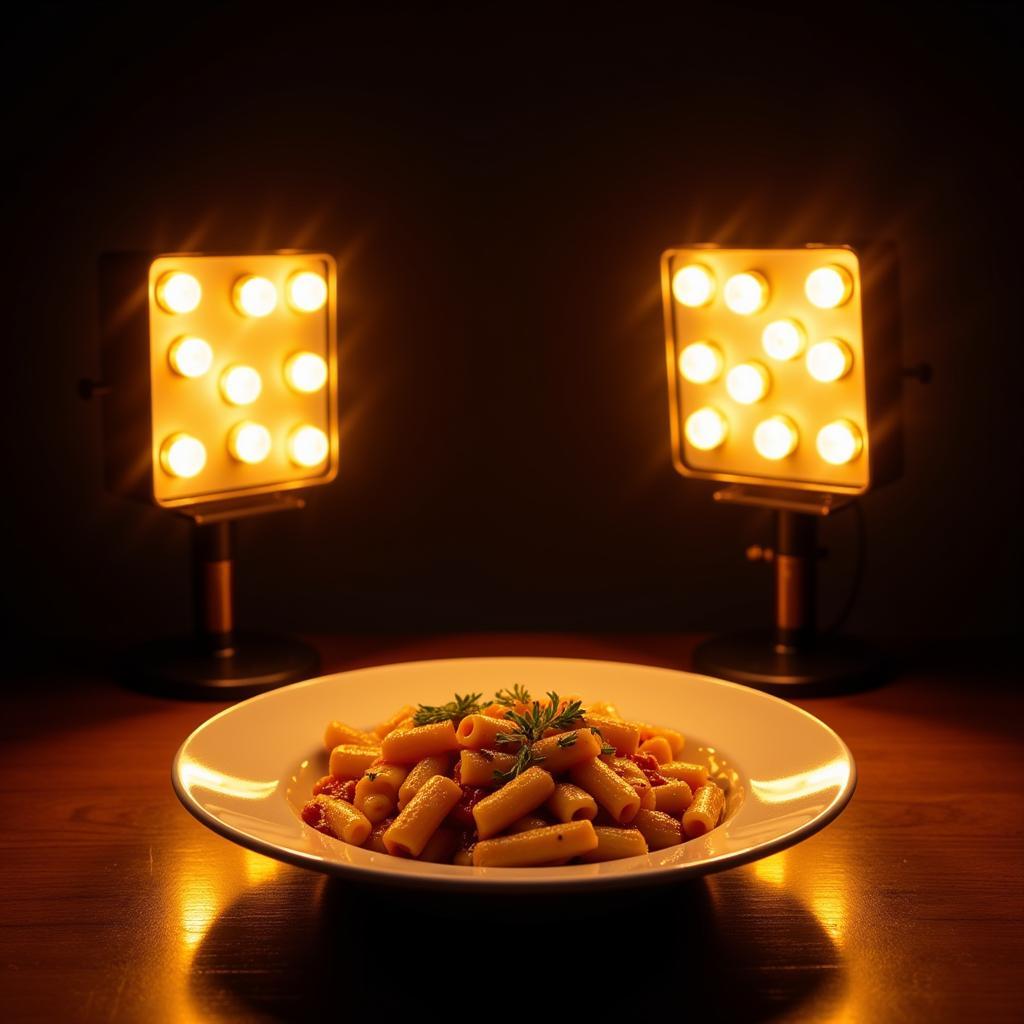Warmer Light For Food photography and dining spaces has become increasingly popular. But why? It’s all about creating an inviting atmosphere and making food look its absolute best. From professional food bloggers to home cooks, everyone is realizing the power of warmer light. Let’s delve into the how and why of using warm lighting to elevate your culinary experiences.
The Psychology of Warmer Light and Food
Have you ever noticed how a dimly lit restaurant feels more romantic than a brightly lit cafeteria? Warmer light evokes feelings of comfort, relaxation, and intimacy. This is why it’s so effective in food settings. It creates a cozy ambiance that encourages people to savor their meals. Warmer light also triggers appetite. Think of the warm glow of a fireplace or the soft light of candles at a dinner table. These associations make food appear more appealing and appetizing. After a stressful day, nothing beats enjoying a delicious meal under the soothing glow of warmer light. For instance, you can even try carrying your meal in an insulated food carrier to enjoy a warm picnic under the setting sun.
Choosing the Right Color Temperature
When it comes to warmer light for food, color temperature is key. Measured in Kelvin (K), lower color temperatures indicate warmer light. For food photography and dining, aim for a color temperature between 2700K and 3500K. This range creates that desirable warm, inviting glow without making the food look unnatural. Higher color temperatures (above 5000K) can make food appear washed out and unappetizing, while extremely low color temperatures (below 2000K) can be too orange and distort colors.
 Warm Light Food Photography Setup
Warm Light Food Photography Setup
Practical Tips for Using Warmer Light for Food
Achieving the perfect warm lighting for your food photos or dining area doesn’t require expensive equipment. Here are some practical tips to get you started:
- Use Warm-Toned Light Bulbs: Swap out cool white or daylight bulbs for warmer options like incandescent, halogen, or warm white LED bulbs.
- Utilize Natural Light: Take advantage of the golden hour – the hour after sunrise and the hour before sunset – for naturally warm and diffused light.
- Adjust White Balance: If using a camera, adjust the white balance setting to “cloudy” or “shade” to compensate for cooler ambient light and create a warmer tone.
- Add Warmth in Post-Production: If editing photos, use photo editing software to adjust the white balance and add a warm tint to your images.
Enhancing the Dining Experience with Warmer Light
Warmer light isn’t just for photos; it plays a crucial role in creating a pleasant dining experience. Imagine enjoying a delicious meal at a food festival salem under the perfect warm glow. Dimmable lights are ideal, allowing you to adjust the brightness to suit the occasion. Consider adding candles or string lights for extra warmth and ambiance. Warm lighting can transform any meal into a special occasion. It sets the mood, enhances the flavors, and makes the overall experience more enjoyable.
“Warmer lighting is essential for creating a welcoming and appetizing dining experience. It’s the secret ingredient to transforming any meal into something special,” says renowned food stylist, Emily Carter.
Warmer Light for Different Cuisines
While warmer light generally enhances most food, some cuisines particularly benefit from its warm embrace. Think of rich, earthy dishes like stews, pasta, and roasted meats. The warm light accentuates the textures and colors, making them appear even more decadent. For lighter dishes like salads and seafood, a slightly warmer light can add depth and visual interest without overpowering the delicate flavors. Even when serving koi foods for sale, warm lighting can highlight the vibrant colors and create a more visually appealing display.
James Peterson, a celebrated chef, notes, “The right lighting can dramatically enhance the presentation of any dish. For heartier meals, warmer light adds a touch of richness and depth, while for lighter fare, it provides a subtle warmth that elevates the overall dining experience.”
Beyond Food Photography and Dining
The power of warmer light extends beyond food photography and dining spaces. It can also be used to create a welcoming atmosphere in kitchens and food preparation areas. Imagine preparing a meal in a brightly lit, sterile environment versus a warm and inviting kitchen. The latter undoubtedly fosters a more enjoyable and creative cooking experience. Even using an antique food warmer can add a touch of nostalgic warmth to your kitchen.
In conclusion, warmer light for food is more than just a trend. It’s a powerful tool for enhancing culinary appeal and creating an inviting atmosphere. Whether you’re a food blogger, a restaurant owner, or simply someone who enjoys cooking at home, incorporating warmer light can transform your culinary experiences. So, embrace the warmth and elevate your food game today!
FAQ
- What is the ideal color temperature for food photography?
- How can I create warmer light in my dining room?
- Does warmer light affect the taste of food?
- Can I use warmer light for all types of cuisine?
- What are the benefits of using warmer light in the kitchen?
- How does warm lighting influence the dining experience?
- Are there any downsides to using warmer light for food?
You might also be interested in learning more about dog food in black bag.
Need help choosing the perfect lighting for your culinary needs? Contact us! Phone: 02437655121, Email: minacones@gmail.com Or visit us at: 3PGH+8R9, ĐT70A, thôn Trung, Bắc Từ Liêm, Hà Nội, Việt Nam. We have a 24/7 customer service team ready to assist you.